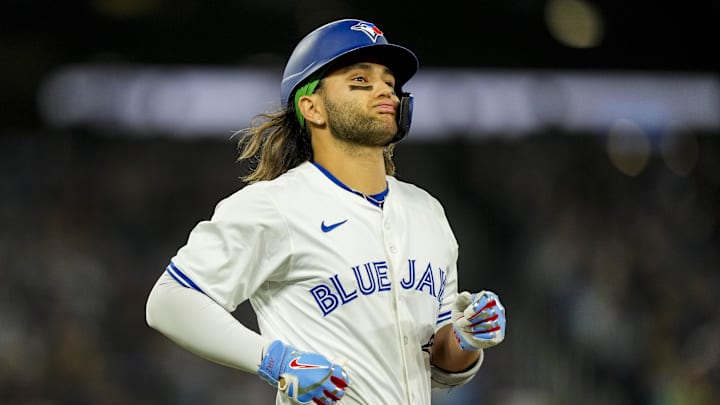Coming into the season, the Toronto Blue Jays and their fans had a lot of questions about how the lineup would perform after a frustrating 2023 campaign. If you were to poll Blue Jays fans before Opening Day about their biggest concerns for the 2024 season, it's doubtful that Bo Bichette's name would be mentioned.
Despite all the turmoil the team has faced over the past couple of seasons, one thing has held true: Bo Bichette can hit.
Last season, he finished with a .306 batting average and an .814 OPS. Over his five MLB seasons, he has a .299 average and an .815 OPS. No matter how you slice it and how up and down his season goes, he always ends up in the same place.
How good has Bichette been compared to his peers? In 2021, he led the American League with 191 hits. He repeated the feat in 2022 with 189. Last year, he finished fourth but still had 175 knocks.
This season, the now-26-year-old is hitting .210 with a .568 OPS, easily the lowest marks of his career. The once reliable Bichette is riding the struggle bus along with his lineup mates George Springer and Vladimir Guerrero Jr. in the early going.
It's gotten so bad that manager John Schneider gave him the day off on Monday. Bichette has previously only been kept out of the lineup due to injury. The move to let him get a breather and a chance to reset signals deeper troubles for the former All-Star, who spent the off day working in the batting cage with his father, Dante, per Sportsnet's Ben Nicholson-Smith.
So what's wrong with the Jays' star shortstop this year?
Bichette's quality of contact is suffering like we've never seen
The good news is that it's not his plate discipline. His metrics look just as good, if not better, than previous years. He isn't swinging at pitches out of the zone more often, with a 40.2 percent chase rate, per FanGraphs. His career average is 40.7 percent.
He's swinging at more pitches in the zone than last season, making more contact in the zone and has dropped his swinging strike rate from 10.3 percent last year to 8.9 percent. His career rate is 11.2 percent. There's proof in the results, as well. He's striking out less than he ever has, at a 15.8 percent clip. No problems there.
Now the bad news.
Usually a fierce ball-striker, Bichette looks anything but this season.
Despite a career-high zone contact rate, the problem in the early going is Bichette's quality of contact. His batted ball metrics look like an entirely different player than we've seen in previous seasons.
Season | Barrel | Hard-hit% | Avg. Exit Vel. |
|---|---|---|---|
Career | 9.4% | 46.4% | 90.8 mph |
2024 | 2.3% | 37.5% | 88.0 mph |
He's carrying a 2.3 percent barrel rate into action on Tuesday. If you're not sure if that's bad, it's bad — like ninth percentile bad. His hard-hit rate is down, as is his average exit velocity.
He's missing the barrel, leading to more and weaker ground and fly balls, which means fewer line drives. Line drives are predominantly how hits come to be. Weak fly balls are where hits go to die. That explains his .305 slugging percentage, his .241 BABIP and his single home run.
Season | GB% | LD% | FB% |
|---|---|---|---|
Career | 47.5% | 22.3% | 30.2% |
2024 | 52.3% | 11.4% | 36.4% |
The real question is whether these sudden changes are due to a mechanical adjustment. Is Bichette doing something different that's keeping him off balance? And is it a conscious or unconscious change? Is there an underlying injury that's affecting his swing path? Or have the Blue Jays' revered hitting analysts done something to "improve" his swing?
Unfortunately, only time will tell.
Bichette has a long enough track record that if he hasn't consciously changed his swing, you can expect a regression to the mean. If, and when, that happens, we'll see the Bichette of old — the one who can carry an offense on his back.
